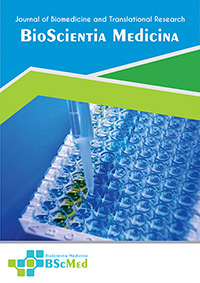Main Article Content
Abstract
Background: The management of a predicted difficult airway in patients with giant goiters presents a significant anesthetic challenge. Chronic tracheal compression can lead to secondary tracheomalacia, a condition characterized by tracheal weakness that can precipitate catastrophic airway collapse upon induction of general anesthesia. We present a case where a high index of suspicion for tracheomalacia guided the decision to perform awake tracheal intubation.
Case presentation: A 22-year-old female presented with a massive, non-toxic nodular goiter that had been growing for eight years, causing significant positional dyspnea. Airway assessment revealed a 10x10 cm neck mass with tracheal deviation, indicating a high risk for difficult intubation and ventilation. Preoperative suspicion of tracheomalasia was high due to symptoms and chronicity. The airway was secured using awake intubation with topical and intravenous lidocaine prior to the induction of general anesthesia. The patient underwent a total thyroidectomy. Intraoperative palpation confirmed flaccid tracheal rings, supporting the diagnosis. The endotracheal tube was retained postoperatively, and the patient was monitored in the intensive care unit. She was successfully extubated on the third postoperative day without complications.
Conclusion: This case underscores the critical importance of maintaining a high index of suspicion for tracheomalacia in patients with long-standing, giant goiters. Awake tracheal intubation is a cornerstone technique, providing a safe and effective method to secure the airway while preserving spontaneous ventilation, thereby mitigating the risk of life-threatening airway obstruction. A meticulous, multidisciplinary perioperative plan is paramount for optimal patient outcomes.
Keywords
Article Details
As our aim is to disseminate original research article, hence the publishing right is a necessary one. The publishing right is needed in order to reach the agreement between the author and publisher. As the journal is fully open access, the authors will sign an exclusive license agreement.
The authors have the right to:
- Share their article in the same ways permitted to third parties under the relevant user license.
- Retain copyright, patent, trademark and other intellectual property rights including research data.
- Proper attribution and credit for the published work.
For the open access article, the publisher is granted to the following right.
- The non-exclusive right to publish the article and grant right to others.
- For the published article, the publisher applied for the Creative Commons Attribution-NonCommercial-ShareAlike 4.0 International License.





